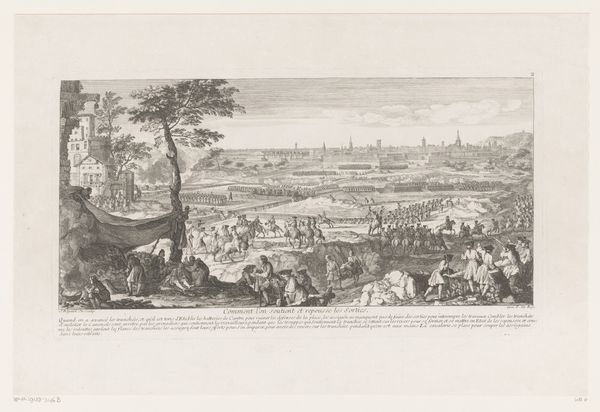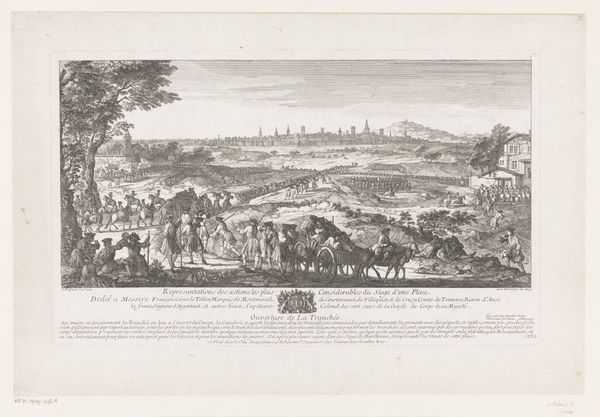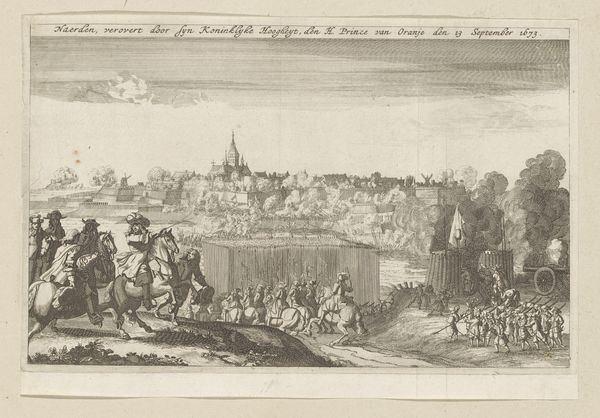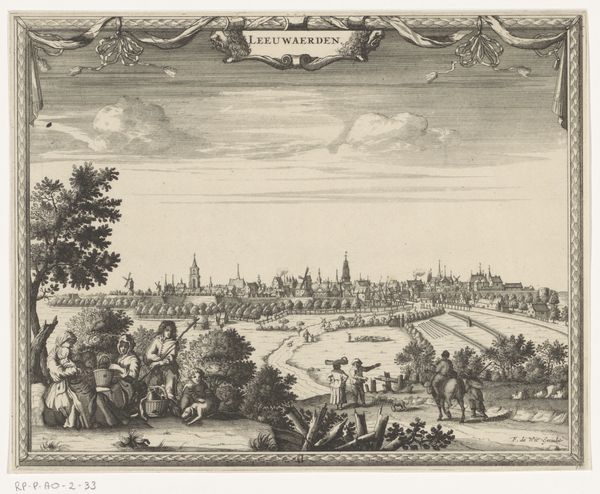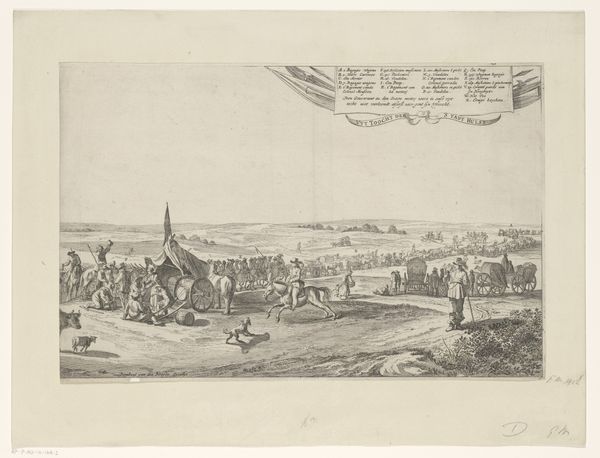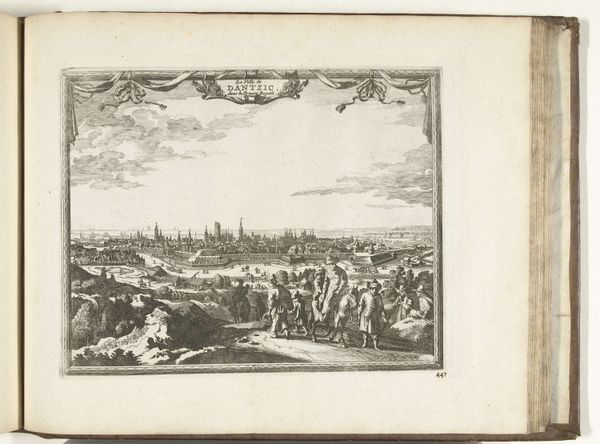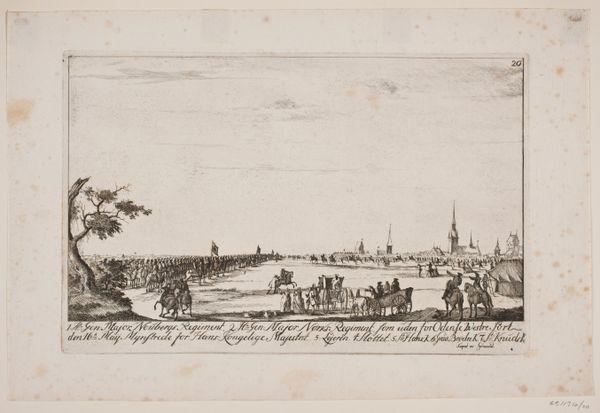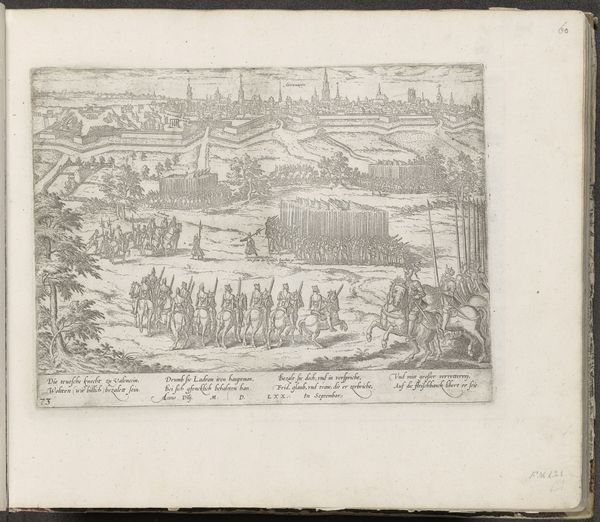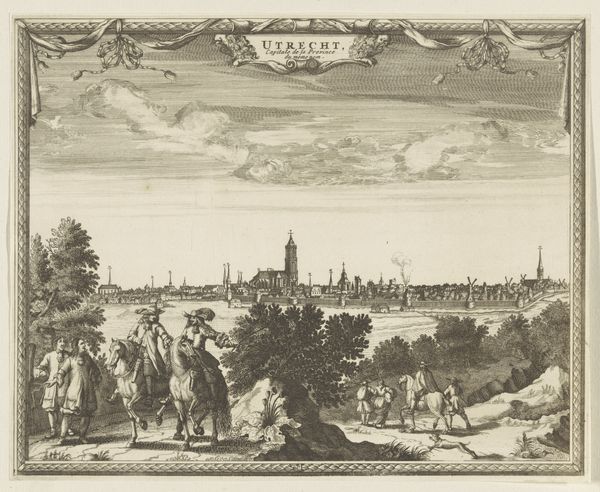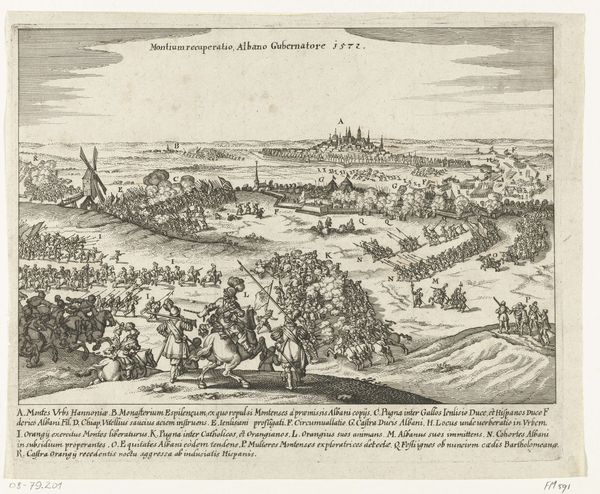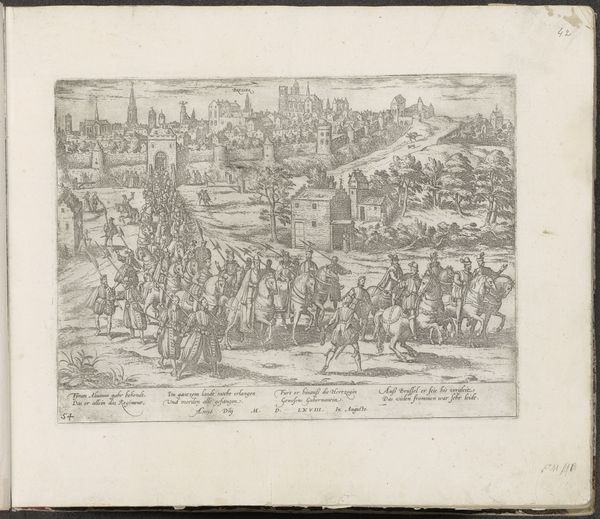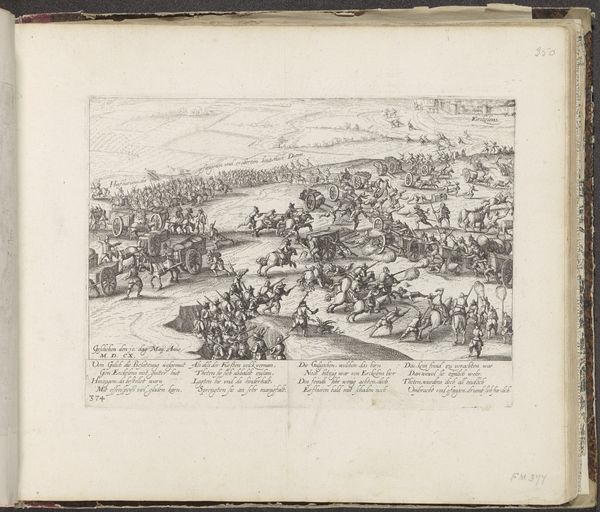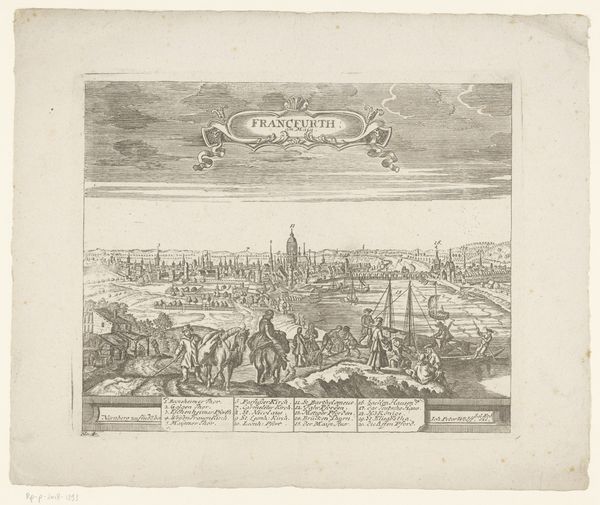
print, engraving
#
baroque
# print
#
landscape
#
cityscape
#
engraving
Dimensions: height 510 mm, width 10670 mm
Copyright: Rijks Museum: Open Domain
Editor: So, this engraving from 1685, "Landscape with a View of Tournay," by Nicolas Cochin...it's remarkably detailed. All these tiny figures! There's a real sense of procession or ceremony happening. What symbolic weight do you think a cityscape like this might have carried at the time? Curator: Absolutely. Cityscapes often transcended mere representations. Notice how Tournay looms in the background. Consider cities in the Baroque era. They weren't just locations; they embodied power, faith, and even civilization itself. Editor: Like visual emblems of authority? Curator: Precisely. Think about the figures in the foreground. Are they simply passersby, or might they represent something more? Consider the idea of conquest, trade, pilgrimage. The journey towards the city is filled with people going in either direction. Editor: That’s interesting… it isn't just about admiring the city from afar, it's the journey and experience of it too. Almost like it’s emphasizing the benefits it brings? Curator: Partly. It might also comment on the burdens that such authority can place on its people. Cochin likely aimed to portray not just Tournay’s physical appearance, but its deeper meaning to its inhabitants and their experience living within the realm it dominated. Now, consider how that visual symbolism impacts us today. Editor: I guess I never really thought about landscapes like this holding so many layers of meaning! This changes how I view these older pieces; not just what’s there, but *why* it's there. Curator: Exactly. Understanding the symbolic language of art helps unlock dialogues with the past. We're not just seeing a place but connecting with the values it represented, too.
Comments
No comments
Be the first to comment and join the conversation on the ultimate creative platform.
